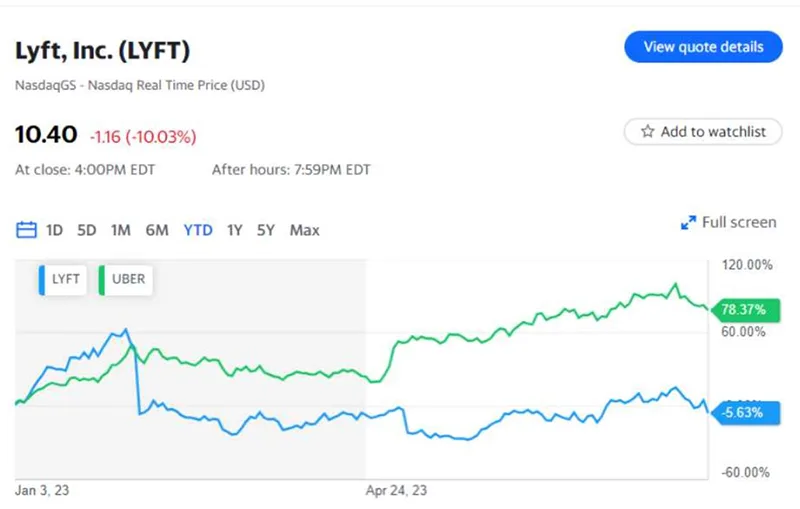Lyft’s Stock Performance: A Closer Look at the Earnings and Market Dynamics
Lyft (LYFT) recently experienced a significant stock price surge of 14% following its earnings announcement on August 8th. However, this initial positive response from investors soon gave way to a 6% decline in Lyft’s share price. The subsequent day saw further losses, with Lyft’s stock down by 7%. This sudden reversal in fortune warrants a closer examination of Lyft’s financial results and market dynamics.

While Lyft faces fierce competition from its larger rival, Uber (UBER), the company’s revenue results met expectations, which was considered a noteworthy achievement. Additionally, Lyft’s third-quarter sales guidance exceeded expectations by a couple of million dollars, providing further optimism. Despite this positive guidance, Lyft’s stock experienced a decline, prompting a comparison with Uber’s second-quarter results from the previous week and raising concerns about Lyft’s fourth-quarter earnings guidance.
Uber, despite missing revenue estimates, offered a more upbeat forecast and reported increased free cash flow. Notably, Uber achieved a net profitability of $394 million, a significant improvement compared to the previous year’s net loss of $2.6 billion. In contrast, Lyft reported a core net loss of $114 million.
Uber’s trip count also outperformed Lyft, with a 22% increase in the third quarter. In contrast, Lyft’s active ridership only grew by 8.2% year-on-year, suggesting that Uber continues to gain market share. Furthermore, Lyft issued cautious fourth-quarter guidance, as it invests in reducing rates and marketing.
Lyft’s pricing strategy was a topic of discussion during the earnings call, with the company expressing readiness for a price war with Uber. Lyft’s new CFO, Erin Brewer, stated, “Q2 represents a full quarter pricing ride-share competitively and roughly in line with the market. The balance in our marketplace improved, and we had strong driver growth and a strong mix of new and returning riders.”
Lyft’s efforts to compete aggressively on pricing have not gone unnoticed by Uber, with Uber’s CEO, Dara Khosrowshahi, acknowledging Lyft as a “tough competitor” and noting that their pricing is now comparable.
Analysts have shared their post-earnings insights, with Jefferies’ John Colantuoni expressing concerns about Lyft’s disappointing fourth-quarter EBITDA guidance, which suggests that pricing parity with Uber may be impacting profitability. Colantuoni also noted Lyft’s anticipated increase in marketing spend in the second half of 2023, indicating rising growth costs.
On the other hand, Dan Ives from Wedbush Securities pointed out Lyft’s positive growth in rideshare rides and its potential impact on Uber, highlighting demand trends related to the return to in-office work and a strong travel environment. Despite the mixed performance, Wedbush Securities maintained a neutral rating for Lyft.
In summary, Lyft’s recent stock performance reflects a complex interplay of earnings results, pricing strategies, and competition dynamics. While the company faces challenges in maintaining profitability amidst pricing wars, it continues to adapt to market conditions and seeks to secure its position in the ride-hailing industry.




